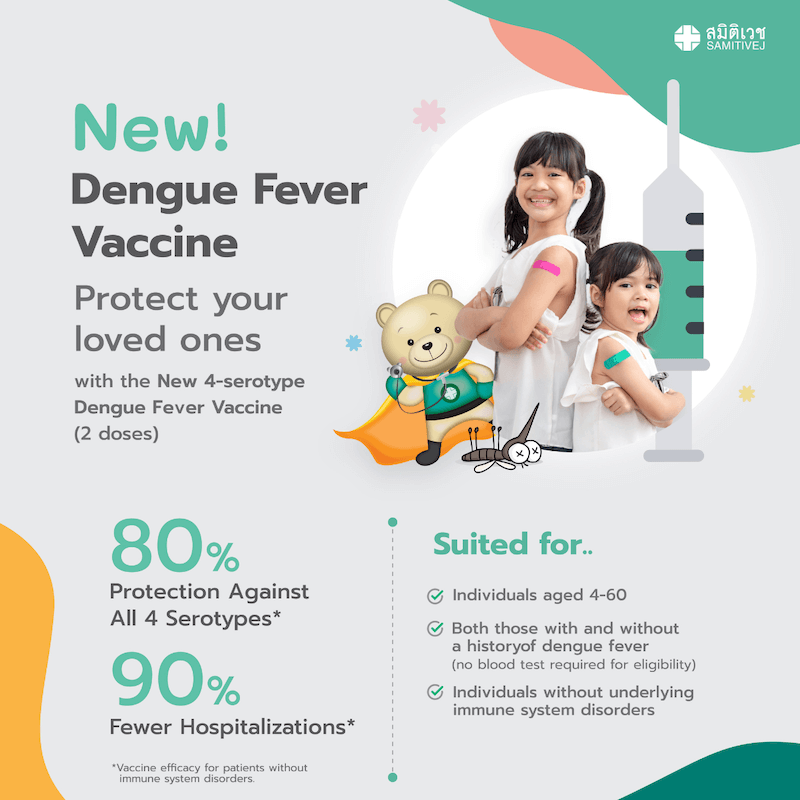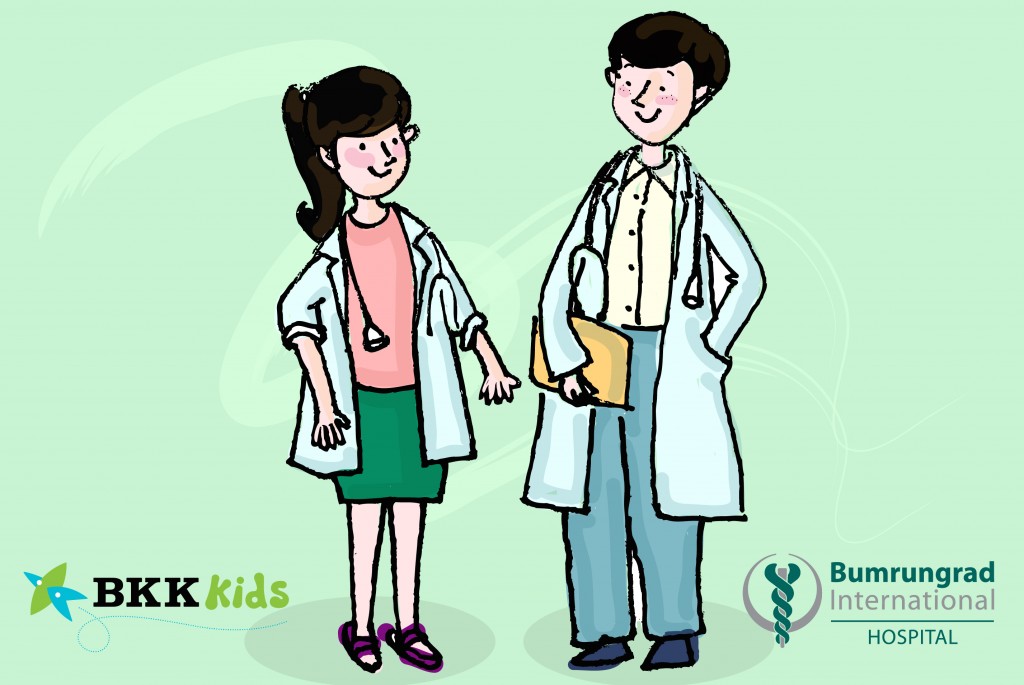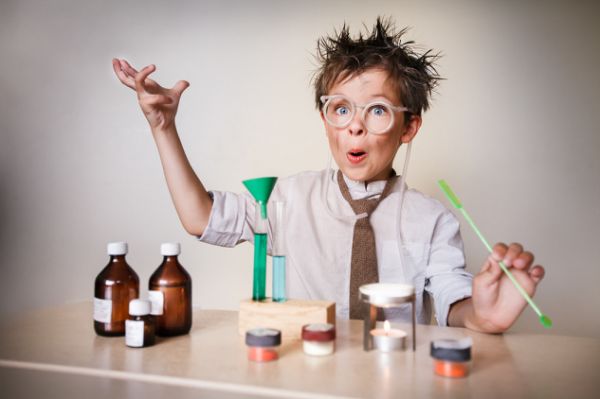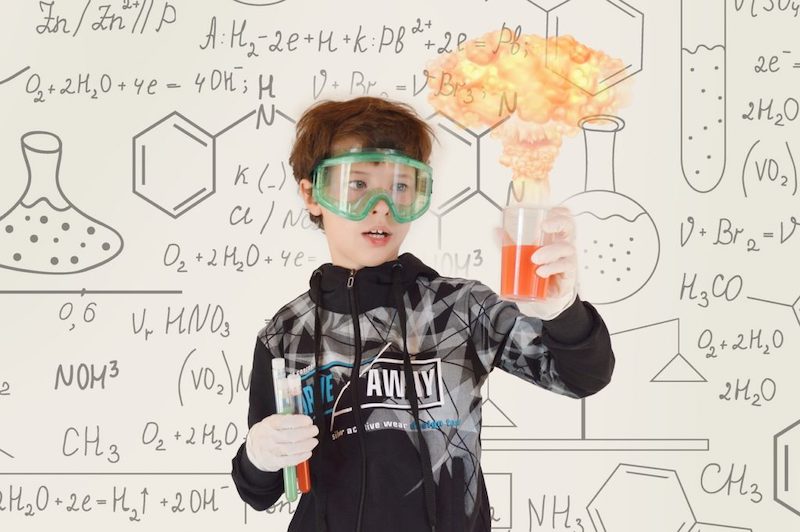As part of an ongoing series of articles with Bumrungrad International Hospital, we have been taking health related questions from parents to be addressed by the hospital’s Medical Coordination Office. Below is Part 3 of this series (the first set of FAQs were published in March 2017 and the second in June 2017.
1. Do you have a geneticist at Bumrungrad? Could you provide more info on the process, if offered? I would like to know if seeing one is beneficial for a child with a family history of certain illnesses.
Yes, we do have a Pediatric Genetics department within the Children’s Center. Generally, a consult with a geneticist is highly recommended for prospective parents who are concerned about potential health issues related to genetics, as well as for parents of children with a family history of certain diseases. The process for seeing a geneticist at Bumrungrad is as simple as seeing any other specialist, simply make an appointment using our web portal, or give the department a call when you’re ready to speak to a geneticist. From there, your doctor can help you determine if further action (such as genetic testing) is necessary.
2. How do you know if a baby has dairy milk intolerance? How long does it take for dairy to work its way out of the system?
Lactose intolerance is caused by a deficiency in lactase, which is the enzyme which helps our bodies break down lactose, the sugar found in milk. Lactase levels are usually high in most infants and babies because milk is usually the first food source to which children are exposed. However, it is possible for a baby to be lactose intolerant.
One of the ways to tell if your baby is intolerant to lactose is by their behavior after consuming dairy. Usually, children with an intolerance will become agitated, fussy, and may even exhibit physical symptoms such as diarrhea or stomach cramps which may cause your baby to become even more agitated. Usually, lactose intolerance is observed in premature infants as they may not have had the time to develop the lactase enzyme. Additionally, some ethnicities including Asian and African American are more likely to exhibit lactose intolerance than those of a northern European background.
Your child’s pediatrician will be able to determine whether or not your child is lactose intolerant, either by just observing behavior after milk consumption, or by performing some simple tests.
The amount of time it takes dairy to work its way out of one’s system will depend on the individual. For some, it may be a few days, while for others it might be two or more weeks. Additionally, the length of time that one can expect to feel the symptoms of lactose intolerance is also dependent on the individual. In some cases, the discomfort can disappear within a few hours, while in other cases your baby may show signs of the discomfort for a few days. In any case, if your child exhibits excessive vomiting and signs of stomach aches for more than a day, speak to your pediatrician.
3. What are the risks of Lyme and other tick borne diseases in Thailand?
Although Lyme disease is more commonly found in certain parts of North and Eastern Asia, it’s still possible to contract the disease here in Southeast Asia, so it’s important to stay vigilant against tick bites when in areas that are known to harbor ticks of the genus Ixodes, which carry the Borrelia bacteria, the culprit for causing Lyme disease in mammals. In terms of other tick borne diseases, consider the temperature and environment of the areas to which you will be exposed when measuring the risks of coming into contact with the insects which usually prefer densely forested areas and high humidity.
One of the biggest sources of ticks and therefore tick-borne diseases in Thailand is due to the high population of stray dogs and cats that populate most of Southeast Asia. In addition to harboring many different types of communicable diseases which can endanger other animals, these stray animals also put humans and other animals at risk for ticks and tick-borne diseases. This is an important factor to consider when coming into contact with street dogs or cats, because it is one of the most common ways that humans (especially children) may come into contact with tick-borne diseases.
4. My child is allergic to mosquito bites, which become large red areas on his skin — what are some things we can do for immediate relief? Can children “grow out of” this condition (i.e., the allergy goes away when they are older)?
Although “true” allergies to the proteins in mosquito saliva are rare, it is still possible to see an extreme reaction or notice an allergic reaction in your child. In most cases, an allergic reaction is exhibited in the following ways:
- Swelling of the eyelids, mouth and lips, as well as on the bite area
- Hives
- Redness that continues to spread 48 hours after the bite
- Nausea and vomiting
- Signs of respiratory difficulty, including wheezing.
If you notice any of these reactions in your child, get medical attention immediately as he/she may be truly allergic to mosquito bites and will need the appropriate intervention to prevent further complications, as well as a treatment in place for the next time a bite may happen.
However, in the case of minor or common discomforts such redness and swelling, a topical treatment with anti-itching properties may be the best solution. If the entire body part where the bite happened appear to be swollen, an antihistamine will be the best course of action at home. In most cases, just applying an icepack wrapped in a cold wet towel with decent pressure will help your child with the itching.
When to get medical attention for a mosquito bite:
- If you notice any signs of breathing difficulty, including wheezing or gasping for air. Get to an ER immediately.
- Redness continues to spread even 48 hours after the bite.
- If your child has a high fever.
- If the itching and swelling do not subside after 24 hours.
- If your child doesn’t seem like him/herself, and you feel like they need to see a doctor.
It is possible for your child to grow out of this or other allergies, which is why it’s important to get an allergy panel done at different stages of childhood. Especially if you are certain that your child’s reaction is a true allergy and not an extreme reaction, keep track of the allergy to ensure that it isn’t getting more severe through the years. Most of the time, children become less and less susceptible to mosquito bite reactions the older they get.
5. How do I tell heat rash from an allergic reaction like hives?
A heat rash is often observed in children during times of extreme heat and humidity. Most commonly, it presents as tiny, reddish bumpy spots (papules) on the skin, and usually appear in areas where the skin doesn’t get much air. Although a heat rash and hives might appear similar, one of the easiest ways to tell the two apart is by considering the cause of the condition. Before the skin condition appeared, was your child exposed to a known or common allergen? Or were they wearing tight or constricting clothing in high heat? It’s also important to note that children are much more susceptible to heat rashes than are adults, mostly because their skin is more sensitive to humidity. One more way to tell the difference is in the symptoms; while hives tend to be itchy and the red spots appear to be raised like bumps, a heat rash typically doesn’t include any other symptoms besides just appearing on the skin.
Another way to determine the difference between the two conditions is to attempt to treat the heat rash by removing or loosening constricting clothing and allowing the area to get plenty of fresh air. If the condition subsides, it’s a good indication that it was a heat rash. However, if no relief is observed after some time, it may be necessary to speak to a doctor to determine if your child has an unknown allergen that could be the cause of the skin condition.
6. My son was recommended to have his adenoids removed as they are often infected and he gets sick. Would he experience any negative issues associated with not having them in the future?
In children who experience a lot of ear infections, an adenoidectomy can help to unblock sinuses and help with drainage of excessive fluid. Generally speaking, an adenoidectomy has not been shown to compromise or weaken the immune system, which is usually the chief concern among parents considering this treatment. It is also important to weigh the option of an adenoidectomy against the risks of excessive use of antibiotics, which can be a factor when children face repeated infections.
However, as this a highly personalized question and every child is different, the strongest recommendation is to discuss both outcomes with your child’s Ear Nose and Throat specialist and arrive at a decision that will lead to a best outcome for your child.
Editor’s Note: This article is sponsored content from Bumrungrad International Hospital. It is intended as general information that may be useful for parents. It is not to be used as a substitute for professional medical advice, diagnosis, or treatment. Always seek the advice of your physician with any questions about a medical condition.
To submit a question to the next set of FAQs in this series, please fill out this online form.















